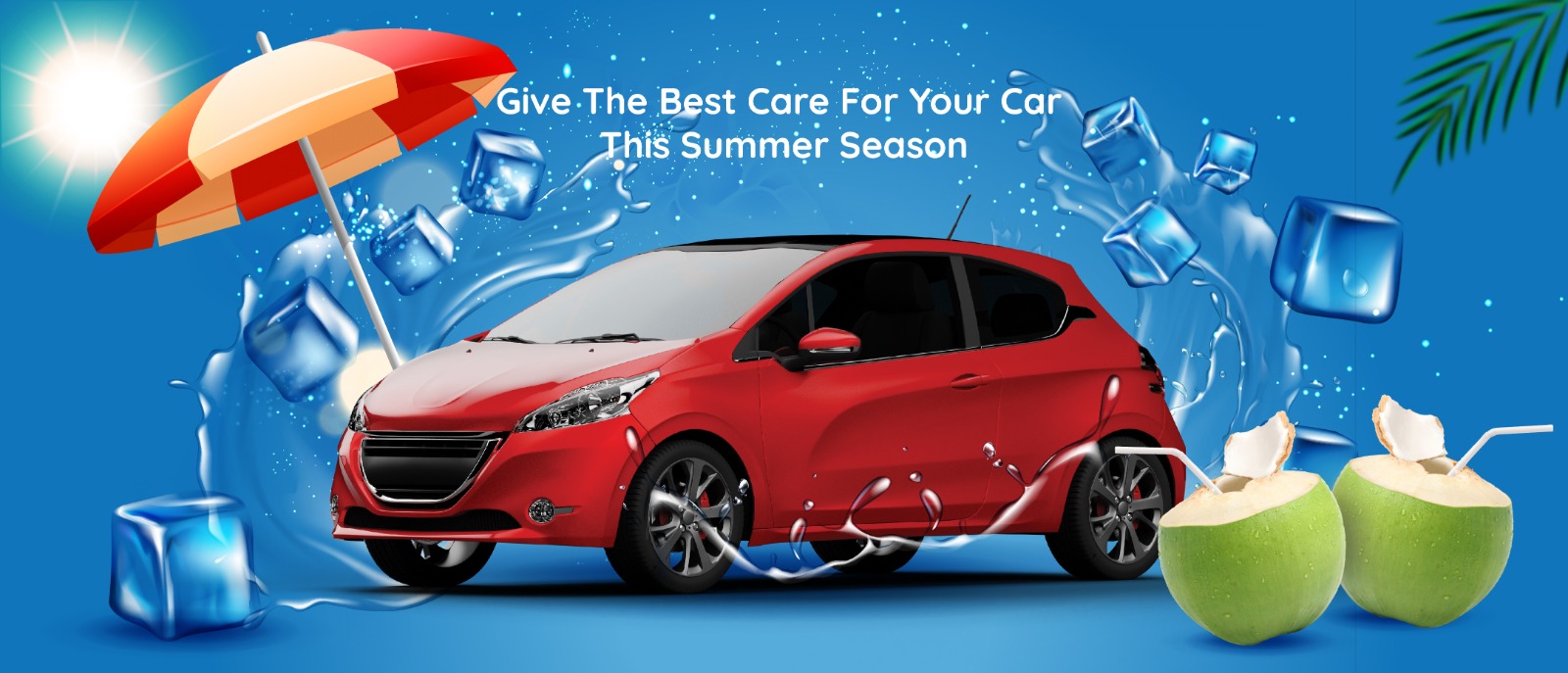Summer Car Care Guide: Essential Tips to Keep Your Vehicle Running Smoothly
As the temperature rises, it's crucial to ensure your car is in top shape to handle the summer heat

As the temperature rises, it's crucial to ensure your car is in top shape to handle the summer heat. Heat can take a toll on several parts of your vehicle, including its fluids, fuel, battery, and tires. In addition to regular maintenance, you may also want to consider adding roadside assistance to your auto insurance policy. This will give you extra peace of mind in case something goes wrong while you're out on the road.
Let’s explore the essential steps for preparing your vehicle for the summer months, from checking your tires to testing your air conditioning system.
Check Your Tires
Your tires are one of the most critical components of your car, and they require extra attention during the summer. Before heading out on any long road trips, ensure that your tires are in good condition.
Start by checking the tire pressure. Tires with low air pressure are more prone to blowouts, especially in high temperatures. The recommended tire pressure typically falls between 28 and 36 pounds per square inch (PSI), but you can find the specific PSI for your vehicle in the owner's manual or on a sticker in the doorjamb on the driver’s side.
Next, check the tread depth of your tires. A quick way to do this is by using the penny test: insert a penny upside down into the tread. If the tread doesn’t cover any part of Lincoln’s head, the tread is too low, and you should consider replacing your tires. Proper tread depth helps maintain traction on the road, which is essential for your safety.
2. Check Your Car’s Fluid Levels
Maintaining the proper fluid levels in your car is key to keeping it running smoothly during the summer. Several types of fluids need to be checked, including transmission fluid, brake fluid, windshield washer fluid, and power steering fluid. However, the most important one during the summer is coolant.
Coolant helps regulate your engine's temperature and prevents it from overheating. In hot weather, your engine is more susceptible to overheating, especially if the coolant levels are low. Make sure your coolant is topped up, and consider flushing and replacing it if it’s been a while since your last coolant service.
3. Clean and Test Your Car Battery
Heat can be hard on your car battery, leading to quicker deterioration. During the summer months, it's essential to ensure your battery is clean and fully charged.
You can clean your battery by removing any built-up corrosion on the terminals. A simple solution of baking soda and water works well for this. Gently scrub the corroded parts with a toothbrush or sponge to remove the buildup.
Once your battery is clean, it’s time to test its voltage. Using a multimeter, check to see if the voltage is 12.4 or higher. If it falls below this level, your battery may need to be charged. If the voltage drops below 9.6 volts while cranking the engine, it may be time to replace the battery.
4. Test Your Air Conditioning System
Driving in hot weather without air conditioning can be unbearable. A properly functioning AC system is essential to keep the inside of your car cool and comfortable during the summer.
Turn on your AC and test whether it's blowing cool air throughout the vehicle. If it’s not as cool as it should be, you might need to have the refrigerant recharged or check for leaks in the system.
In the meantime, if your AC isn’t working, there are a few ways to stay cool. Roll down your windows to increase airflow, park in shaded areas whenever possible, and consider using a cooling seat cover or portable fan.
5. Test Your Brakes
Your brakes are another vital part of your vehicle that should be checked before embarking on summer road trips. Hot weather can amplify any existing brake issues, so it’s important to ensure they’re in good working order.
Listen for unusual sounds like screeching or grinding when you press the brake pedal. These noises may indicate worn brake pads or other problems. Additionally, pay attention to how your car reacts when you brake. If it pulls to one side or vibrates, this could signal an issue that requires professional attention.
Other signs that your brakes may need repair include visible wear on the brake pads and brake fluid puddles underneath your car.
6. Consider an Oil and Filter Change
Regular oil changes are essential for keeping your engine running smoothly, especially during the hot summer months when the engine is working harder. Fresh oil helps lubricate the engine's moving parts and prevents overheating.
Most vehicles need an oil change every 5,000 to 7,500 miles, but you should consult your owner's manual for the exact recommendation for your car. When you get your oil changed, consider replacing the oil filter as well, as it can become clogged with debris over time. Some manufacturers suggest changing the oil filter every other oil change, while others recommend replacing it every time.
7. Replace Your Windshield Wiper Blades
Your windshield wipers play a vital role in ensuring clear visibility during rainstorms. Since summer can bring sudden rain, especially in regions like the southeastern United States, it’s essential to have functional wiper blades.
Wiper blades wear out quickly and typically need replacing every six to nine months. If your wipers are leaving streaks or making squeaking noises, it’s time to install new ones. This small step can make a big difference in driving safety.
8. Check the Car’s Belts and Hoses
The belts and hoses in your engine compartment are subject to wear and tear, especially in extreme temperatures. During the summer, the heat can cause them to crack, bulge, or become soft, which can lead to a breakdown.
Check the belts for glazing or fraying, and inspect the hoses for any soft spots or cracks. If you notice any damage, it’s best to replace these parts before they fail on the road.
9. Restock Your Emergency Supplies
Even with proper preparation, unexpected breakdowns can happen. That’s why it’s important to keep an emergency kit in your car at all times, especially if you’re planning a long road trip.
Essential items to include in your kit are jumper cables, a flashlight with extra batteries, bottled water, non-perishable snacks, blankets, a first aid kit, automotive fuses, duct tape, and basic tools. Having these items on hand can help you manage minor issues or wait safely for roadside assistance if needed.
10. Remove Items You Don’t Need in Your Car
Clutter in your car not only takes up space but can also affect the efficiency of your vehicle. Before hitting the road, clear out any unnecessary items, such as trash, old receipts, or items you no longer need.
At the same time, avoid leaving valuable belongings in your car, as they are at a higher risk of being stolen when you leave the vehicle unattended.
11. Ensure You Have Roadside Assistance
Finally, for added peace of mind, consider purchasing a roadside assistance plan. Roadside assistance can provide timely help if your car breaks down or you experience other issues while traveling.
Services typically covered include towing, winching, tire changes, jumpstarts, fuel delivery, and lockout assistance. Keep in mind that while roadside assistance will help you in an emergency, it doesn’t cover repairs to your car. You may need additional car repair insurance for mechanical breakdowns or other damage.
Taking care of your vehicle during the hot summer months is crucial for your safety and the longevity of your car. By following these summer car care tips, including checking your tires, fluids, battery, and more, you can ensure that your car is prepared to handle the heat. Additionally, having roadside assistance can give you peace of mind in case something goes wrong while you’re on the road.
What's Your Reaction?


















